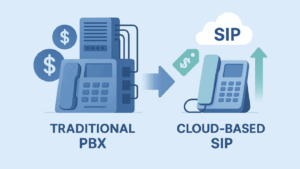
Top 5 Telecommunications Innovations of the Future
There have been more than 2.6 billion new mobile subscriptions since 2010. The increase has led to a rapid regulatory, technological, and customer demand changes.
The telecommunication industry has experienced an increasing level of uncertainty. Even so, the opportunities it presents are greater today than they have ever been before.
These opportunities are greater when you have chosen to embrace disruptions and drive growth. Also, it allows businesses to reimagine their network service capabilities.
Today, even the big telecommunication companies must embark on customer-focused transformation. This helps in the redesigning of core network businesses that maximize resilience. At the same time, it will support their ability to offer carrier-grade services.
Technology has greatly affected the global economy. It has improved living standards and led to more robust international trade activities.
The telecommunication industry has provided data and network infrastructure. This allows the internet to become mobile and smart. When it comes to reinvention, the telecommunications industry is experiencing major challenges.
This article will discuss 5 of the most important innovations of the future in telecommunications.
1. The Internet of Things
The internet of things works by linking different objects within an active network. This facilitates data management and how it is collected. In telecommunication protocols, these create a global network. They use the IoT leverage sensors, internet connectivity, and mobile devices.
All these work together to boost interactions. They also ensure data points communication between nonphysical and physical objects. IoT also offers support to sip trunks.
The reason why IoT is on this list is that it is not limited to smartphones, laptops, or computers. It can be applied to all devices in their interactions with the environment by using the internet and embedded technology.
They also guarantee sustainable, efficient, and safe environments. This is more important in areas where customers can enjoy all telecommunication services. As a result, there are numerous opportunities that have the potential to change how data is consumed.
Here are a couple of ways that IoT will benefit the telecommunication industry:
- It helps with better management of the changing networks and usage patterns. This can be done by the tapping of information and power from predictive analytics to avoid network outages.
- Telecommunication companies have the opportunity to track and maintain their bandwidth. Customers will get more coverage. This will increase download times and improve customer services. There will be a reduction in service and call waiting time. This means more revenue from customers because the disruptions will be minimal.
Companies will be better equipped to deal with consumer demands, data, and connectivity. Businesses can also adopt new strategies. The new strategies include the use of machine data that allows them to predict issues long before they happen.
When society is networked, it is easier for consumers and industries to embrace the full power of internet connectivity.
According to experts, the world will be electronically connected by 2021. IoT facilitates this machine-to-person and machine-to-machine connections and communication.
2. Fifth Generation Wireless Technologies
Industry representatives and researchers have found an insatiable need for advanced technologies . It will improve data rates, provide better capacity, reduce latency, and increase the quality of service.
This race toward 5G is on and it will be even higher-paced in 2020. According to data collected from YouTube alone, there are 3.2 billion hours of videos watched every month. By 2020, it is estimated that 20.8 billion devices will be connected to the internet.
There should be increased usage of websites like Netflix, YouTube, and social media. 5G is projected to be more than 10 times faster than 4G when it comes to downloading. The speeds are about 10 GBPS.
What does this mean for carriers? Well, all the IoT services they are banking on do not work without it. Here are some benefits it will offer to its users and suppliers:
- Faster speeds: With 5G, it may only take seconds instead of hours to download high definition movies.
- Shorter delays: While it may not always be noticed, there is often a brief lag between the time data is sent and the time it is received. 5G will reduce the lag and make it possible to watch a high-speed VR video without experiencing any glitches
- Better connectivity: When equipped with 5G, cell towers will have increased capacity. It means they can support more people, more devices and more communications.
3. Cloud Computing
More and more businesses are migrating from the use of landlines to smartphones. There is an increasing need for them to keep up with the competitive pressure of these changing networks.
There is a huge growth in traffic online because of video and mobile phone usage. It has pushed providers to spend more to keep up with the bandwidth demands.
There is still competition from various providers. Cloud computing will help in introducing revenue-generating services, reducing costs, and increasing customer satisfaction. A great way to transform is to ensure that they reduce operating costs and agility.
With cloud computing, service providers can enjoy cost numerous benefits. These include effectiveness, economies of scale, and scalability. It is important to understand that telecom cloud is not the same as IT cloud.
With telecommunication industries all over the world, high levels of reliability and availability need to be met. Additionally, the providers must save their investments in existing infrastructure.
The existing infrastructure is frustrating. This is because it is difficult for companies to manage the hardware. The complexities of deploying and integrating the physical devices in the network are often too much.
That is why Network Functions Virtualization is important. It leverages the available commodities of servers in the IT industry. They also integrate them with virtualization technologies.
How does this help telecommunications industries?
- It minimizes the power, space, and cooling requirements of devices. It does this by introducing new, simpler management network services
- Reduces the time taken to deploy new networking services. The networking services support the changing requirements and improve ROIs on new services
- Decreases the need for people to purpose-built hardware and support pay-as-you-grow models. These completely eliminate wastefulness.
- It scales up and down the services to cope with the changing demands. This is through allowing service delivery using software from any server.
4. Carrier-Grade Wi-Fi
Going big on IoT will not happen if there are constant broadband connectivity problems . Telecommunication companies want to offload the pressure from congested mobile networks. Wi-Fi is becoming a crucial part of the conversation.
Carrier-grade Wi-Fi is great news for people who have previously relied on public ones.
Carrier-Grade Wi-Fi is a collection of technologies. The technologies allow companies to scale up their internet access points. Businesses can also increase security, capacity, energy management and performance.
Today, the billing of Wi-Fi networks needs one to have the right SSID, key in the password, and have credit card details.
But, with carrier grades, the billing will be seamlessly done through mobile sim cards. Thus, users will get faster and more stable connections. They can easily migrate from 4G to 5G without any user input.
The quality of service will also allow for traffic optimization through the air. This will significantly improve apps that struggle with latency, packet loss, and jitter.
It is also a great way to determine whether one access point is being overloaded. The access point can then reject new and potential clients to preserve their performance levels.
5. Improves Security Protocols
Connectivity and speeds have improved. But what does that mean for user security? In 2018, it seemed that there were reports on networks being compromised each week. The new innovations may lead to data breach and theft.
According to a recent report, up to 43% of companies suffered malware attacks in November 2018.
Companies are working harder to prevent these losses and reduce infrastructure vulnerabilities. A great start was the business-wide encryption and holistic network security approaches.
More and more companies are also embracing target attack simulations. These are drill attacks on systems that are meant to keep teams on their toes and show them where malware creators could be targeting. It allows them to create the most advanced defenses that can resist advanced attackers from all over the globe.
With the threat-based approach, it is easier for them to create a realistic view of the company’s security posture. They can, therefore, adopt more programs that are highly effective and that have worked for other companies in the same industry.
For instance, Attach Path Mapping is a unique solution. It has allowed for real-world attack methods that help determine the risks of critical assets. It also provides companies with actionable intelligence on ways to mitigate these risks.
Staying Ahead in Telecommunications
These trends are always emerging and dying-down. It is therefore important for stakeholders in the telecommunications industry to stay alert.
This way, they can adopt new technologies and let go of the old ones. Some may be more expensive than others. But with adequate market research, you will invest wisely.
If you need more information on trends in the telecommunication and sip trunks, please contact our knowledgeable experts.


